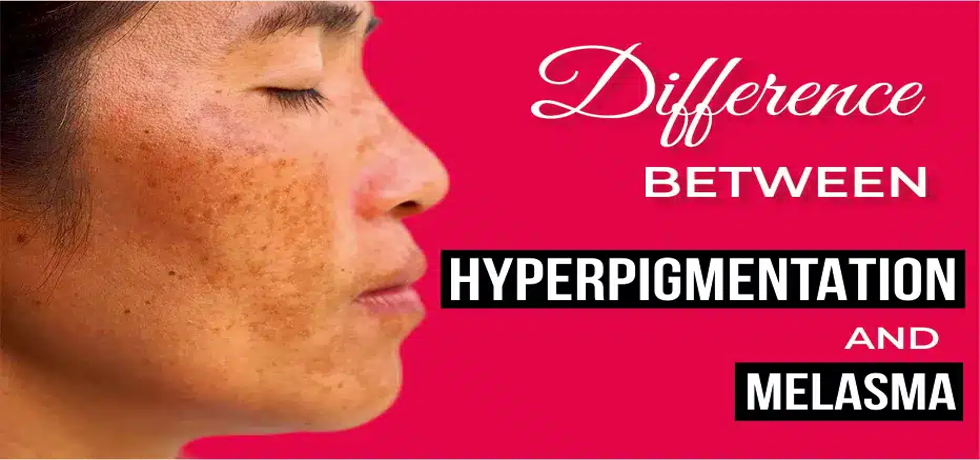
Understanding Hyperpigmentation and Melasma: Key Differences and Treatment Insights
An Overview of Skin Pigmentation Disorders
What is Hyperpigmentation?
Melanin, the pigment responsible for our skin color, can sometimes produce excess amounts, leading to skin discolouration. Hyperpigmentation is essentially a collective term for such skin concerns, which can manifest as dark spots due to various factors such as sun exposure, inflammation, and certain medications. This skin condition often results in the formation of uneven patches or spots on different body areas, making it a prevalent issue among individuals regardless of skin tone.
Causes of Hyperpigmentation
Several factors contribute to hyperpigmentation. One primary cause is UV exposure, as sunlight can trigger the overproduction of melanin in an effort to protect the skin. Furthermore, skin inflammation, whether from conditions like acne or injuries, can lead to post-inflammatory hyperpigmentation. Other contributors may include reactions to medications and certain health conditions, making the understanding of this condition paramount for effective hyperpigmentation treatment.
Exploring Melasma
Melasma, on the other hand, is a specific type of hyperpigmentation that typically appears as brown or blue-grey patches on the face, most prominently affecting the cheeks, forehead, and upper lip. It’s often referred to as the “mask of pregnancy,” as hormonal changes during pregnancy can trigger its onset. While melasma is generally benign, it can be a source of concern for those affected. Understanding its unique characteristics helps in determining the best melasma treatment strategies.
Identifying Hyperpigmentation vs. Melasma
Distinguishing between hyperpigmentation and melasma can be challenging, but certain indicators can provide clarity. For instance, while hyperpigmentation can occur on any part of the body, melasma predominantly affects the face. Additionally, the distribution of patches differs; hyperpigmented areas might be isolated while melasma often displays a symmetrical pattern. Reviewing one’s medication history or exposure to sun without adequate skin protection can also offer helpful signs in determining the underlying condition.
Effective Treatment Options
Fortunately, there are various treatment options available for both hyperpigmentation and melasma. When it comes to melasma, treatments such as retinoids and hydroquinone are often effective in lightening skin tone and reducing the visibility of patches. On the other hand, hyperpigmentation can often be addressed through vitamin C serums and chemical peels, which aid in brightening the skin and evening out skin tone.
Actionable Steps for Managing Skin Discoloration
For individuals dealing with either hyperpigmentation or melasma, a proactive skincare routine is essential. Regular use of sunscreen is crucial to prevent further skin damage and discoloration, while maintaining a balanced diet rich in antioxidants can contribute to overall skin health. Lastly, consulting a dermatologist can provide customized insights and help in determining the most suitable treatment options for specific skin concerns.
Conclusion
Navigating the world of skin pigmentation can be complex, but understanding the differences between hyperpigmentation and melasma can facilitate more effective skincare. Both conditions are manageable with the right treatments and strategies. If you find yourself struggling with these skin issues, reach out to a professional for assistance.
Frequently Asked Questions
Can hyperpigmentation and melasma be prevented?
While it may not be possible to prevent all cases, using sunscreen daily and avoiding excessive sun exposure can significantly reduce the risk.
Are treatments for hyperpigmentation and melasma safe?
Yes, many treatments are safe when recommended and monitored by a qualified dermatologist. It’s important to follow professional advice for optimal results.

